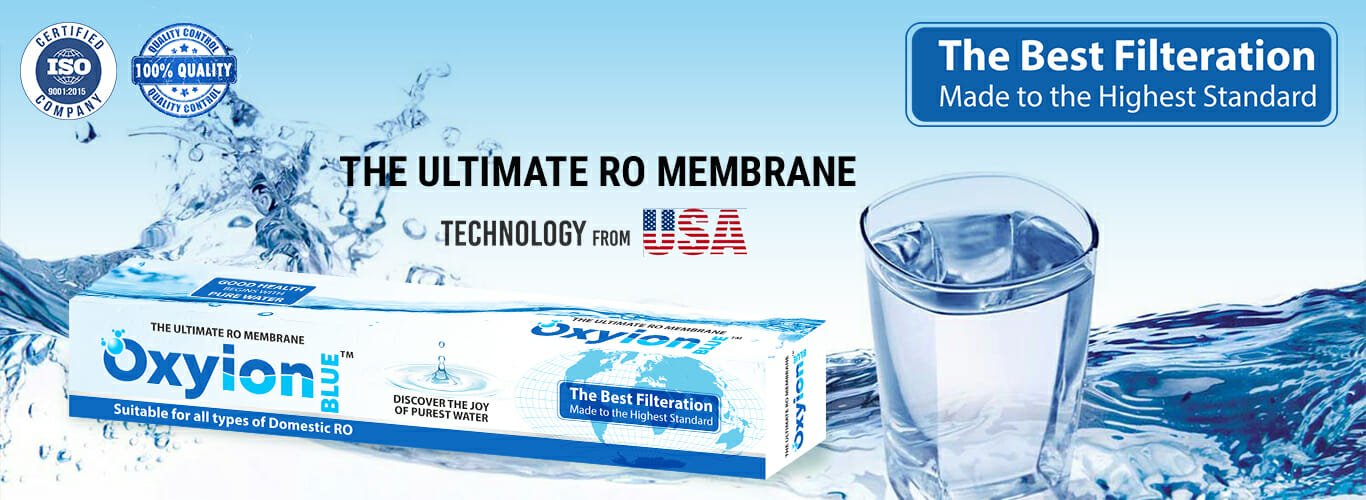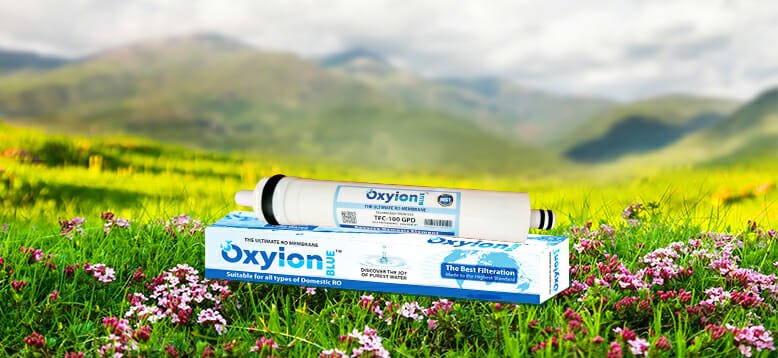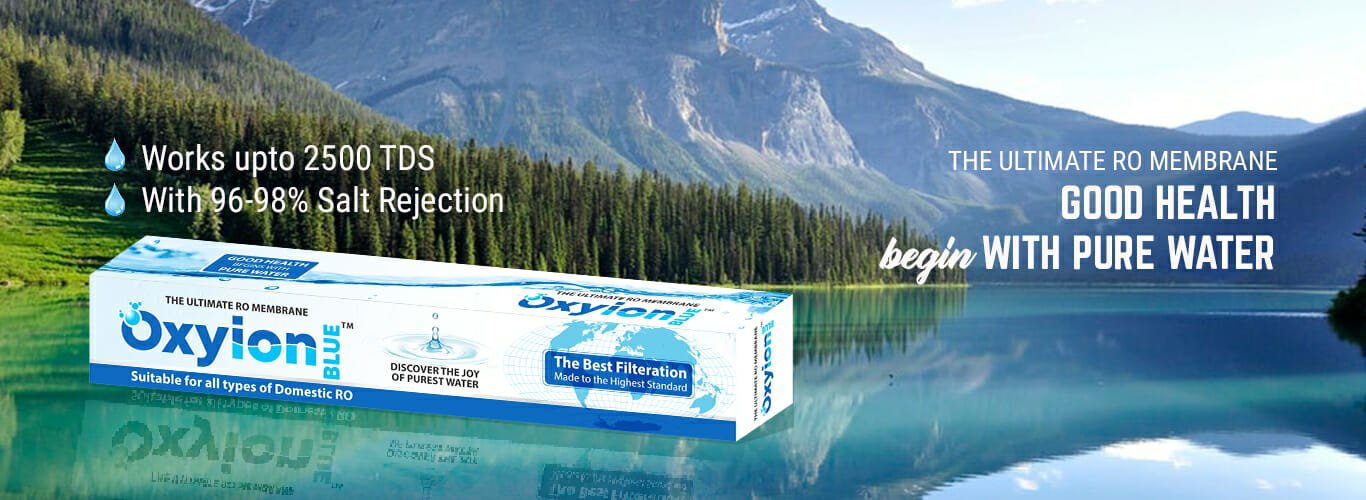

What is Reverse Osmosis?
Reverse Osmosis, basically, is a water filtration process using a selectively permeable membrane which allows only certain useful ions and molecules to pass through. This pressure-driven selectively or semi-permeable membrane filters water for drinking purposes by applying pressure to overcome osmotic pressure. To understand better, let’s dig a little deeper and first understand the naturally occurring process of osmosis
Osmosis
Osmosis is considered as a special type of diffusion that requires the presence of a special membrane. It is the phenomenon of movement of water molecules through a semipermeable membrane to separate a dilute solution from a concentrated solution until the concentration becomes uniform in both. In osmosis, a weaker(dilute) solution tends to migrate to a strong saline(concentrated) solution to obtain equilibrium on both sides.
Osmosis works accordingly with the concentration gradient of water across the membrane, which is inversely proportional to the concentration of solutes in the solution. The process of osmosis takes place until the concentration gradient of water becomes nil or the hydrostatic pressure of the water balances the naturally occurring osmotic pressure.
Some examples of osmosis include the absorption of water by plant roots from the soil, dialysis of the kidney in the excretory system, swelling of seeds like resin, when soaked in water.
To understand better how the osmosis works, check the diagram given below:

Here, the water with low solute concentration and that with high solute concentration is separated by a selectively permeable membrane. The water with low concentration will move towards the water with high concentration. The difference in height of both the sides of the water that arises after the movement from lower to higher concentration is called osmotic pressure.
Reverse Osmosis is different to osmosis on the basis of pressure. While osmosis is a naturally occurring phenomenon and does not require any external pressure, reverse osmosis requires pressure. To bring out the process of Reverse Osmosis, an external pressure which should be higher than the naturally occurring osmotic pressure is applied to the solution with higher concentration to allow the movement of water through the reverse osmosis membrane. The semi-permeable membrane, in the reverse osmosis, does not allow the dissolved salts, bacteria and pyrogens to pass, but only water molecules. Hence, pressure is required to push the water through the semipermeable membrane and to reverse the flow of the water. This reversal holds back the contaminants and carries out the process of purification of water by desalinating or deionizing it, only allowing the pure water to pass.
To understand the process of reverse osmosis, let’s take a look at the picture given below. Here, when pressure is applied to a volume of tap water during the process of reverse osmosis, the impurities are restricted from entering the less concentrated side of the membrane, by the semipermeable membrane and only clean water flows through.

Reverse osmosis(RO) typically removes 85% to 99% of most mineral contaminants present in water. The filtered water produced is called permeate. It removes impurities such as excess TDS(Total Dissolved Solids), harmful contaminants such as bacteria, viruses, chemicals and naturally present heavy metals. The concentrated, impure water left is called the brine.
How does a reverse osmosis system work?
A reverse osmosis system first removes sediment and chlorine from the tap water or concentrated water, with a prefilter. The RO system then uses a high pressure, usually with a pressure pump, on the concentrated side of the RO and pushes the water to pass across the selectively permeable RO membrane, leaving the brine or salts behind. After the water retires from this membrane, it is made to pass through a postfilter to finally polish the product water or drinking water before it enters a faucet.
Stages of RO System
RO systems are made up of different stages of filter. However, RO membrane remains the focal point of a reverse osmosis system, other filters known as prefilters or postfilters are also important in the whole process of filtration. Hence, every RO system is made up of – a sediment filter, a carbon filter and RO membrane. These filters have different functions such as:
Sediment filter – This filter is used to remove the majority of particles like dirt, dust, debris and rust etc.
Carbon filter – Carbon filter is used to remove volatile organic compounds, chemicals like chlorine, and other contaminants that are responsible for the bad taste and odor of the water.
Semi-permeable membrane – The RO membrane removes up to 98% of total dissolved solids(TDS) like arsenic and fluoride.
Steps of water filtration:
● On first entering the RO system, the water goes through the stage of prefiltration. This stage includes a sediment filter and a carbon filter. These filters are used to remove sediments and chlorine from the adulterated water. This stage is crucial as these impurities could clog or damage the RO membrane if not prefiltered.
● Completing the prefiltration process, water goes through the reverse osmosis membrane. This semi-permeable membrane removes the dissolved particles that are too small to be seen even with a microscope.
● After the water is filtered, it flows to the storage tank, which is further connected to a faucet. The water is held in the tank until it is needed.
● Once the faucet is turned on, the water flows out of the tank passing through another post filter, to finally polish the drinking water.
The RO system uses a cross filtration method. With cross filtration, the solution or filtered water passes through two outlets: one for filtered water and the other for contaminated water. This cross flow filtration, rather than standard filtration, is useful in avoiding the build up of contaminants in one place and also allows enough turbulence to keep the surface of the membrane clean.
Reverse Osmosis Membrane
RO Membrane is considered to be the focal point of the Reverse Osmosis system. This membrane is composed of a thin film composite membrane, consisted of three layers: a polyester support web, a microporous polysulfone interlayer, and an ultrathin polyamide barrier layer and is composed of minute pores to ensure that only pure water flows through it, leaving behind the impurities. RO membranes are deployed as cross-flow filters, and hence, keeping the surface clean.
It plays important role in the water purification process, such as:
● It removes harmful contaminants and disease-causing impurities that are even too small to be seen through a microscope. These impurities, if consumed by humans, can cause a drastic effect on health.
● It improves the taste of water. The bad, salty taste in water is caused by Total dissolved solids(TDS) which include concentrated particles of inorganic salts and compounds. It is the role of RO membrane to get rid of such impurities and improve the taste of water, making it sweeter.
Application of reverse osmosis system
Over the recent years, it has been proved that reverse osmosis is an effective and economical technology to produce water, suitable for not only household use but for many industrial applications that require demineralized or deionized water. This technology is effective in removing water pollutants and can guarantee drinking water safety.
Let’s take a look at the applications of this compact and simple reverse osmosis system:
● Improving drinking water quality – The RO system has proven to be efficient in improving the quality of water by removing salt and hardness, organic substances and micro-organisms. The sea water and brackish water is unsuitable for drinking due to the high level of divalent ion concentration and other harmful ions such as fluorine and arsenic and can cause many diseases such as calculi. Reverse osmosis can effectively be used to improve the quality of such water. According to researchers, the removal rates of fluoride and arsenic in RO membranes can reach more than 95%.
● Reusing rainwater – Rainwater is an abundant freshwater source, but due to poor conservation and filtration techniques we lose the most of it. If utilized properly, it can improve the water supply. In the treatment of rainwater to make it drinkable, reverse osmosis technology is commonly used.
● Recycling of wastewater – In recent years, the discharge of wastewater has increased substantially. The industrial wastewater, discharged directly without any treatment, can seriously pollute the environment. In the advanced treatment of industrial wastewater reverse osmosis has become the core technology. The treatment of wastewater through RO technology can result in saving a large amount of groundwater and also promising the safety of drinking water.
● Treatment of radioactive content in water – Reverse osmosis is considered the most effective treatment of high natural radioactive content in drinking water. This technology is efficient in removing 95% of total alpha activity and 93% of total beta activity.
Advantages of Reverse Osmosis System
RO membrane technology is considered to be the most advanced and environment- friendly separation technology. Some of the advantages of reverse osmosis membrane technology are:
● Since this technology is reliant solely on the pressure as its driving force, it consumes very low energy compared to other means.
● RO systems are easy to maintain due to use of mostly non-metal materials in construction.
● This technology does not require any use of chemicals to bring out the process of purification.
● The reverse osmosis system is environment friendly and economical as compared to other physical separation techniques.
● RO systems are designed to be compact and less space consuming.
● It provides the most efficient water quality.
● It can effectively remove fluoride, salt, sediments, chlorine, arsenic, VOCs, herbicides and pesticides and bacterias.

Disadvantages of reverse osmosis system
With the continuous application of the reverse osmosis technology, the disadvantages are increasingly revealed. Some of the disadvantages are:
● The complete process of the water purification is very slow in the household applications as very low pressure is used.
● While the system can purify the water, it does not help in disinfecting. Disinfecting might require a whole separate process.
● If the RO membrane gets damaged, it will allow any small microorganism to pass through it.
● Even though the system is efficient it is not self-sustaining and hence, time consuming.
Conclusion
Reverse osmosis is an effective and proven system to produce filtered water to be used in household as well as industrial applications. It is the most easy to maintain technology available for household usage that if maintained properly can provide high purity water for many years. This system of reverse osmosis is of great significance to the sustainable utilization of the water resources also ensuring the development of society.
